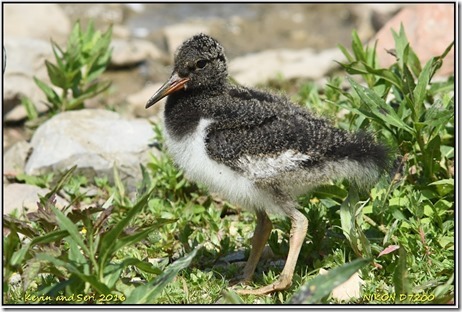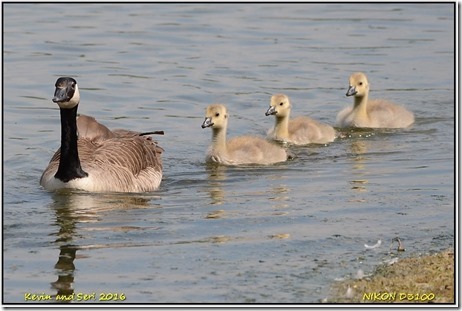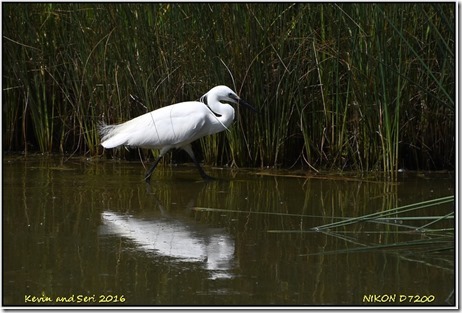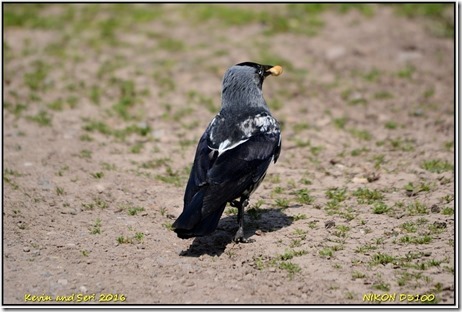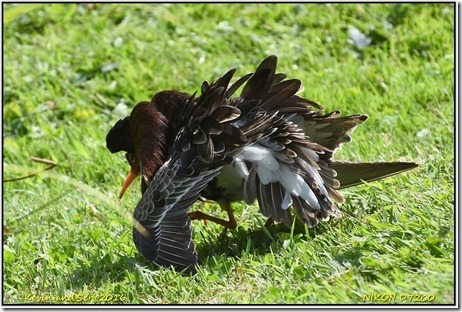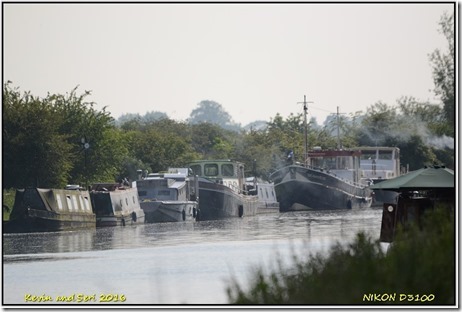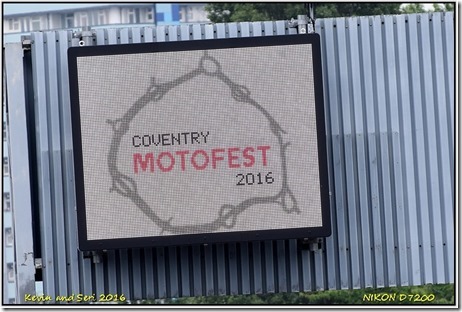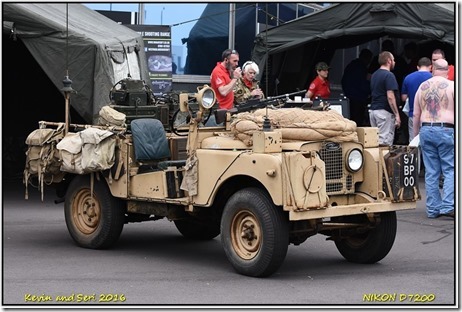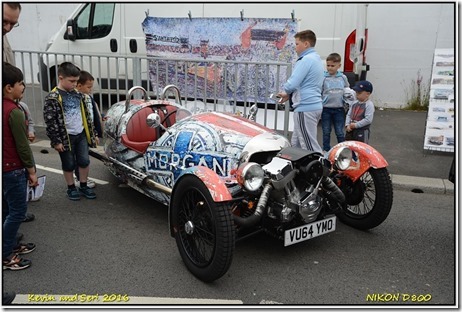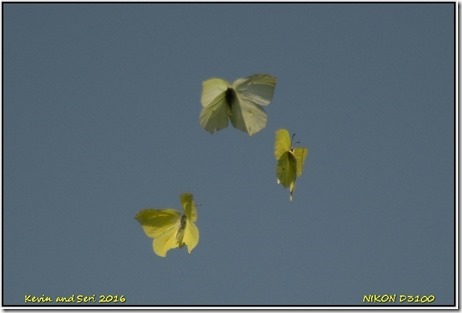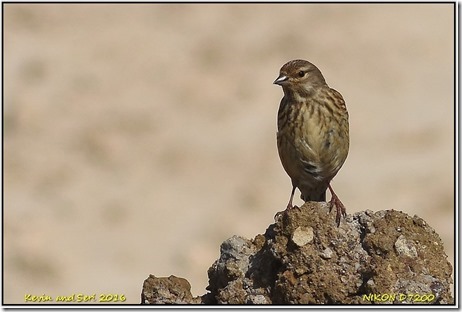June, thy beauty is a snare
To waste time in vision’s rare;
Of vain dreaming, oh beware!
~Caroline May, 18187~
The first month for the meteorological summer began in the only way we knew with clouds and rain and more rain. At 14C it was even colder than Christmas which was 15C. Temperatures plunged due to a system advancing across the British Isles with an onshore breeze blowing in from the North Sea. The wet start was marked by many disgruntled people as images of rain-soaked clothes, giant puddles and broken umbrellas were posted on Twitter as beaches were left deserted.
But, whatever the weather, we packed our cameras and drove to Slimbridge WWT when we received the news that one of the Great Crane’s eggs had hatched. Whoop…whoop. Unfortunately, the journey was stop and start traffic on the M40 for no apparent reason. We realised what it was when we drove past a long transporter having one of its tyres changed. Aaaah… motorists stopping to look at that!!! When we arrived at our destination, we weren’t surprised to see the car-park full. News travelled fast. Even this little munchkin poked its head out to see what the fuss was about.
We headed straight to Rushy Hide to say hello to the latest and most precious arrival. The place was packed to the rafters but we waited patiently and quickly moved in as soon as someone moved away. Monty and Sedge was on the nest, clearing used nesting materials and adding fresh ones. Pieces of sticks were picked and re-arranged to make the nest comfortable. For about 15 minutes, we couldn’t see the poppet but there were plenty of other things to point our cameras at.
And then, wallah…between the legs of its parents, a fluffy ginger head popped out of the vegetation. Everyone went aaaahhhh… It was just one day old. It will fledge at around 65-70 days and will take between 4-6 years to reach maturity. The hatchling was generally helpless but able to crawl away from danger within a few hours, swam soon after hatching and run with their parents at 24 hours old. It will be fed by its parents bill-to-bill until it gradually became self-sufficient.
My heart melted when it used its wing to stabilise while walking. It was cute overload. When it was time for a nap, Sedge slowly lowered herself onto the nest with the hatchling safely tucked under her. According to the website, the second egg will hatched in a few days. After all the eggs hatched, the family will forage close to the nest site for the first week but, as the chicks got older, the parents expanded their pre-fledging foraging area and escorted them over greater distances to favoured feeding grounds. I couldn’t wait to visit again when the second egg hatched. It would be lovely to see both of them together.
Rushy Hide had became a wildfowl creche. Everywhere you turned, balls of fluff on two legs were everywhere. But at times, they were well-hidden as the heavy vegetation wasn’t cut back as it provided cover for fledglings and thus avoided being predated. This cute Oyster Catcher chick was feeding with its very attentive parents right in front of the hide. But as soon as the parents sense any danger, they gave out loud ‘tea-kettle’ shrieks and the chick immediately ran for cover under the vegetation right below the hide. There it stood still until one of the parents called out to say it was safe. Then it quickly ran to them and resumed feeding again.
When Oyster catcher chicks hatched, they were always fed by the adults, and their main food at this time was earthworms. Because the chicks don’t feed themselves, only 2 chicks survived to grow to adult size. We watched one of the parents present food to this young and then trained it to find the food itself. The counter-shaded plumage blended surprisingly well in their feeding habitat. The chick was also quite independent and often seen wandering on its own.
Oyster catcher parents were very aggressive towards all interlopers. We saw them starting their ‘piping’ with bills to the ground and then with very loud alarming calls, flew after the intruder and chased it away. They flew around and around in a low circle while calling ‘scree, scree, scree’ constantly. They attacked the approaching danger by launching aerial combat missions piercing shrieks and red-dagger stabs.
These alarm calls raised a racket and alerted the rest of the inhabitants and set off the Avocets in the vicinity, joining in with the chase, flying up to attack or confuse the intruder and drive them off. They now had chicks and we spotted at least 3 feeding on the mud-banks.They looked adorable and fragile but very independent. They ran about and fed themselves within a few hours of hatching. They’d to because they were never fed by their parents.
Like all young waders, the chicks were active from hatching and the adults defended a feeding territory around them, chasing off other interlopers including other Avocets. Being large and conspicuous, Avocets believed that attack was the best form of defence and chased off potential interlopers including these Shelduck juveniles which got too close to the chicks.
The adult Shelduck ran over with a loud honk and lead the juveniles to safety. The juveniles were drab, dull white, brown-black marks and a whitish face with the adult’s wing pattern. They also lacked the belt and belly stripe. They started flying when they were 45 days old. Female Shelducks were exceptionally good parents and were extremely vocal in the care of their ducklings.
Then a family of Canada Geese with 3 goslings swam into view. As soon as the goslings hatched, they were immediately capable of walking, swimming and finding their own food. The parents led their goslings in a line, usually with one adult at the front, and the other at the back. While protecting their goslings, the adults violently chased away anyone who dared came close, after warning them by giving off a hissing sound and then attacking with bites and slaps of the wings.
We left the rowdy creche and headed towards the next hide. Common Spotted Orchids dotted the path. The most common of all UK orchids, it got its name from its leaves which were green with abundant purplish oval spots. They formed a rosette at ground level before the flower spike appeared with narrow leaves sheathed the stem. The flowers were densely packed in short, cone-shaped clusters and enlivened the path.
We always stopped by the wooden bridge to check for water voles. We’d not seen them here for quite some time. At the end of the bridge, a Small White fluttered by and landed on a Cuckoo flower. Commonly known as ‘Lady’s-smock’, the pale pink flowers was believed to had bloomed to coincide with the arrival of the cuckoo. The Small White was probing for nectar after landing and was feeding long enough for me to take a photograph.
Martin Smith Hide was void of visitors both in and out the hide. A few Shelducks and Gulls were foraging along the riverbanks. The tack piece had turned into a meadow field which supported a wide array of wildflowers which included cowslips, bugle, ragged robins, sorrel, white ox-eye daisy and buttercups. A herd of cattle was seen grazing on the fields as a cost-effective way of keeping the grass short to allow these wildflowers to flourish.
Suddenly this white beauty crept silently from the reed-beds. A Little Egret was feeding walking slowly and stalking its prey in the shallow lake by shuffling its feet to disturb the small fishes or other invertebrates in the water. Often, it periodically stopped walking and stood still waiting to ambush its prey or running rapidly in the shallow water, stabbing to left and right. During its usual foraging, its neck was stretched out in many position from vertical to horizontal and thus allowed to strike its prey with a lightning-fast movement.
Little Egrets were generally solitary and silent birds when feeding. They stood out well in their pure white plumage. They had white feathers with fluffy white plumes on their crests, on their chests and on their backs above the tail feathers. The bills and legs were black, but the feet were bright yellow. In the breeding season, they had long plumes on the head and shoulder.
We left when the Little Egret went deeper into the reed-beds and disappeared from view. Since Willow Hide was empty, we walked back into the grounds. As we walked near the visitor centre, House sparrows were scaling the wooden walls picking up insects and spiders with their beaks. Both parents feed the young. After the young birds had fledged, the male continued feeding the fledglings while the female began the next brood.
We spotted a semi-leucistic Jackdaw flying around the playground. Leucism in birds was caused by a lack of pigment in the feathers. It was a condition in which there was partial loss of pigmentation in animal resulting in white, pale or patchy coloration of the skin, hair, feather, scales or cuticle but not the eyes. Unlike albinism, it was caused by a reduction in multiple types of pigment, not just melanin.
We checked out the Wader Shore again to see how the Avocets chicks were doing. They’d grown in just a few days. They were now very independent and often ignoring the adults. Their heads were starting to look angular and their bills had a distinct upturn and were feeding with the adult sweeping motion, Even their legs looked ‘leggy’. What a contrast to a few days ago when we’d last seen them.
The male Ruff was still displaying their stunning flamboyant breeding plumage. Their brightly coloured head tuffs were getting bigger and brighter and the large collar of ornamental feathers that inspired their name was getting fluffier. The bare orange facial skin with warts and extensive black on the breast were much more visible and vivid in colour. It was show time.
Each male was still staking their small territorial space. Elaborate displays were performed which included wing fluttering, jumping, standing upright, crouching with ruff erect or lunging at rivals that happened to get too close. They were silent when displaying although a soft gue-gue-gue could be heard. The extreme variability of the breeding plumage was thought to had developed to aid individual recognition in a species that had mute communal breeding displays. We decided to end the day when we hadn’t seen any interests from the females.
We stopped on a lay-by before the Patch bridge that connected Slimbridge WWT to the rest of the world. I was chuffed when the swing bridge was closed to traffic to let a canal boat passed underneath it. It was unbelievable to think that this Gloucester and Berkley Ship canal (original name) which was opened on 26th April 1827, was the broadest and deepest canal in the world at that time with a width of 26 metre and a depth of 5.5m. The black shed beside the bridge was built in 1911 to store grain on its way to Draycott Mills, Cambridge.
Due to concern that Patch Bridge, built in 1960s, wasn’t designed to carry the heavy vehicles that visited Slimbridge WWT, British Waterways made arrangements to install a replacement bridge during the early months of 2009. The bridge was operated from an adjacent console which also operated traffic lights and barriers. The swing bridge was manually operated by the bridge keeper, whose office was the Grade II bridge-keepers’ cottage. It was a canal-side lodge with a one storey canal front due to the build-up of embankment and very low-pitched Welsh slate roof. Swing bridges were a feature on these canals as they allowed the passage of ships with tall sails.
We also watched House-martins gliding low over the canal picking of flies before fluttering back into the air. Gliding and stalling, diving and climbing, they spiralled overhead displaying great grace and mastery of flight. These summer visitors were metallic blue-black with white rumps and pure white undersides with short, weakly forked tail. If you looked closely, their legs were covered with soft downy feathers down to their toes.
They must be nesting in the nearby cattle barn and black shed because we spotted them flying around them. Unlike the Barn swallows, they used the outside of inhabited buildings, rather the inside.They built closed cup nests from mud pellets at the junction of a vertical surface and an overhang, such as on house eaves, and strengthened by attachment to both planes.
When we walked back to the car, I was distracted by a soft twitter of melodious chirps. When I looked through the cattle gate, I saw a flock of House martins on the muddy pool gathering mud. I crept slowly and watched them collecting pelts of the almost liquid mud. Then one by one, they flew up and dab a pellet of mud on the wall, and this process was repeated The nest was then lined with grasses, hair or other soft materials. It must be cosy inside for the eggs and later the chicks.
On the way home, we followed a different route suggested by our sat-nav. We went on the A17 Cirencester existing at 11A for the Cotswold District. It was uphill driving and instead of ripening yellow rapeseed fields, we drove through miles and miles of meadows with yellow buttercups. Froths and froths of white flowering Hawthorn separated the fields. We drove through dips and valleys on the Fosse Way Roman road, passing quaint stone villages before getting stuck for half an hour at Moreton-in- Marsh. When we tuned in the radio, we found out that the M5 had turned into a car-park. I’m glad we took the long and winding route of scenic Cotswold. A shame we couldn’t stop to photograph.
Wooden sculpture by Peter Walwin near Patch Bridge, Slimbridge
The month of June had taken us by surprise. It crept so suddenly that we’d nearly forgotten about the annual Coventry Motorfest. Babe reminded me just the day before and thankfully, I was able to ask my colleague, GLW, whether we could park at his place. He lived just a few streets away from the ring-road where the action was. Luckily, he was spending the weekend in Derbyshire and so we’d the parking place to ourselves, or so we thought.
As soon as we parked our car, a 4X4 parked next to us. Who on earth??? I’d to check the house number twice to make sure we were at the right address. When we got out of the car and smiled at the other driver, he introduced himself as GLW’s brother-in-law. Phew… we told him that I was GLW’s colleague. Sorted and we went our separate ways.
MotorFest returned to Coventry for its 3rd year transforming the city’s centre and the renowned ring-road into a fun-fuelled stage showing off an array of spectacular vehicles from the past, present and future. Taking advantage of the city’s unique heritage as the spiritual home of the British motor industry, the free motoring extravaganza celebrated the city’s automotive and engineering pedigree with an exciting display of current and historic cars.
The iconic ring road was again a unique street circuit showcasing memorable machines in motion which included racing cars, trucks and motorbikes. There were also live music, trucks, buses, films, stock cars, armoured vehicles, taxis, art, stalls, design, education, prototypes, engineering, and even bicycles involved. There was also a range of automotive activities taking place from pop-up racing and demonstration events to static displays and fringe events, sort of an ‘Edinburgh Festival’ for cars, bikes and vehicles. In short, if it’s got something to do with transport, had a connection to the City of Coventry and involved an engine, it was here ![]()
We walked straight to Friargate-bridge deck and the nearby Greyfriars Green where thousands of people had already lined the ring-road as things got going. But first, we checked out several stalls with plenty of heritage displays. There were Tesls, Royal Engineers, hospitality and racing trucks, Eibach Springs, Power Maxed, Top Gear experience, Audi, VW, Skoda, SEAT, Honda, Toyota, Lexus, Jaguar Land Rover, Sytner Coventry, Aston Martin, Costco, RDM group, Heineken enclosure and alcohol from local brewery Byatts. There were racing bikes brought by Donnington Park for the first time. I fell in love with this Citroen E-Mehari. Sigh…
We found something missing at the Motorfest, a certain je ne sais quoi. Although there were the incredible noise of highly tuned engines revving up, the screeching tyres, the smell of burnt rubber and exhaust fumes were in the air and hundreds of people about, it didn’t had the vow factor. Perhaps, this was our 2nd visit and we knew what to expect. But, we still took hundreds of photographs.
I went to a car show to see what they had, some were real good and some were real bad. There were cars for the rich and cars in parts, some of the old cars left in push carts.
I always enjoy this auto auction and show, vintage iron to see with some I don’t know. Cars big and small some short and long, each owner has his own vintage car show song.
The ones I like the best, above all the rest, are the old beat up cars at this car fest. Old family cars that moved families around, rusty and faded with worn seats do abound.
Once a great treasure, a great pride and joy, family errands and daily duties to employ. Vacations with family, warm memories to save, dad wore the car out then to the kid it was gave.
Weary of use made no difference to the kid, it was then used for everything dad did forbid. Weekend trips to the local drive in show, kissin’ and smoochin’ till they made you go.
These old wrecks made America great, for next years version we would anxiously await. I wonder if the new car crop of today, will be viewed in fifty years the same grand way.
My wife drives a newer car for every day, a forty year old classic is my favorite way, No heater, no computer to make life an ease, but it’s mine, paid for, and pretty as you please.
So next time you see a coming car show, pack up your family and be sure to go. It may surprise you the memories you hold, of cars you have owned and cars you have sold.
~Robert Stoner Jr~
We then walked along Warwick Road checking a few classic bikes on show. Due to road closures, the traffic was very heavy as we tried to cross the road towards the Bull Yard where proud owners of Triumph motorcycles and Kestrel Honda were showing off their pride and joy. We were quite surprise to see Broadgate quite empty except for a few classic cars. A stage was taking up the space but there was nothing on. We nipped over to University Square to check out the Coventry University display from their Formula Student race vehicles.
We walked on the cobbled Priory Street past the Priory Visitor Centre. From here, we could see that Millennium Place was buzzing. It was occupied by the Coventry Transport Museum display and Classic Car Clubs. There were amazing performances from 2 very talented girls who kept the visitors entertained. We were here for half an hour before we made our way through the crowd back to Greyfriars Green.
We saw a huge crowd at one of the exhibition tent and stopped to check it out. It was the unveiling of the new Aston Martin Vulcan, making its first appearance on a UK public road. The £1.8 million track-focused hyper-car was one of only 24 examples in the world. I was gutted that I’d missed the 7.0 litre V12 powered track monster screaming its way along the closed sprint route driven by Scottish racing driver, Peter Dumbreck, a former Le Mans racer.
Then we squeezed among the spectators to watch the Rover-BRM parade lap. It was a gas powered blast from the past as the iconic turbine race-car vowed the crowds all over again. It was in the 1960s when the car was first tested at the Motor Industry Research Association (MIRA) track near Nuneaton by Graham Hill and road tested in and around the ring-road. We hoped the 150bhp 2S/150 two-shaft gas turbine engine would gave the crowd a roar, but it just went silently through the sprint circuit. We also watched the parade laps from motorbikes and cars before calling it a day.
After yesterday’s highly charged day, we chilled out with our feathered friends at our favourite playground. We heard the cries of the Great Spotted Woodpecker chicks and followed their calls. We waited for a while and we spotted one of the parent flying in. We knew that it won’t fly to the nest if it spotted us so we left them in peace. We stopped at Baldwin Hide and watched the Common Terns flying around the lake and fishing.
They were delightful silvery-grey and white birds with long tails that earned them the nickname ‘sea-swallow’. They also had a buoyant, graceful flight. When seeking fish, it flew head-down and with its bill held vertically. It circled or hovered before diving, and then plunged directly into the water when it spotted a fish.
The birds shrug off the slant air, they plunge into the sea and vanish under the glassy edges of the water, and then come back, as white as snow, shaking themselves,
shaking the little silver fish, crying out in their own language, voices like rough bells-- it's wonderful and it happens whenever the tide starts its gushing journey back, every morning or afternoon.
~Mary Oliver ‘The Terns~
We also noticed that the Sand-martins were flying in and out of the earthwork structure. The smallest hirundines with dark brown upper parts and dark underwings, they were agile fliers feeding mainly over the lake. Their twittering song was continuous when they were on the wing. Both parents took turns in incubating the eggs and feeding the young.
We continued to East Marsh Hide and spent a few hours watching a waterfowl fest. An adorable family of Mute Swan with 6 of the most fluffiest cygnets was sunbathing on the island. The cygnets were quite vocal, communicating through a variety of whistling and chirping sounds. When distressed or lost, they do make harsh squawking noises.
Then we watched one of the parent leading them into the water. They followed each other in a straight line. These cygnets won’t be able to fly until they were 120-150 days old. They were able to feed themselves when they were about two weeks old. At this point, their diet consisted of aquatic insects and crustaceans. Even though the adults only eat plant matter, cygnets eat protein-rich insects to support their rapid growth.
Little cygnet in the springtime air,
slowly shedding feathers grey;
siblings, leaving home, exploring
other homes and other ways.
~Simon Alexander~
We scanned the mud-banks when we heard the yodelling cries of the Redshank.but we didn’t see any. Instead, we saw this Little Ring Plover foraging for insects and worms on the island. The hunting style was a characteristic hesitant stop-run-peck, in a hunched position. Usually territorial, it preferred to feed alone.
We also spotted a lone Barnacle Goose on the island opposite Baldwin Hide. I wonder why we didn’t see it when we were there. It was odd to see it on its own because they were sociable geese. From a distance, I could see its black head, neck and breast with the creamy-white face, contrasting with the white belly, blue-grey barred back and black tail. It should be migrating to its breeding grounds on the Arctic islands of the North Atlantic soon.
We made a pit stop at Carlton Hide which was empty except for a few Mallards and a Heron skulking in the reed-beds. Aquatic weeds were taking over the pond and I think the volunteers were fighting a losing battle in controlling them. When we walked towards Ted Jury Hide, this LBJs (little brown jobs) was checking the surrounding
At Ted Jury, I was hoping to see the Cuckoo but it didn’t receive the memo. We heard its calls echoing from deep in the woods but it failed to appear. Instead there were Kestrels perched on the branches and a Little Egret fishing at the far end of the hide near the Peregrine perch. Babe had taken this photograph of the Cuckoo when he was here earlier in the week.
Then it was time to head home. Near the visitor centre, we saw 3 Brimstones in the air. We could see the very pale green, almost white wings of the female while the males had yellow-green underwings and yellow upperwings. Two males had located a female and the trio were up in the air circling onto the heights on chasing each other. Were they thinking of a menage a trois!!!
But then, one of the male left and the pair continued to spiral into the sky in a courtship flight before performing a mating dance. After mating, the female wandered off, searching for suitable food-plants such as buckthorn on which to lay her small, green bottle shaped eggs. A mated female won’t look for more relationships, and shrugged of late suitors. After mating and egg-laying, the over-wintered adults ended their life cycle around midsummer. The next generation appeared in August to feed up before entering hibernation.
Babe peered down the stone walls that bordered the reserve. On the dried up mud pool, he spotted these female Linnets feeding. They were duller than the male and without the attractively marked crimson foreheads and breasts. They fed on the ground, and low down in bushes, their food mainly consisted of small to medium-sized seeds from most arable weeds.
As we were about to drive off, we saw a Buzzard gliding and soaring above us with a shallow ‘V’ to broad and rounded wings. The tail appeared fan-like and had a barred experience. In flight, the wings had a ragged, moth-like appearance as it glided to and fro at a tremendous height. Buzzards were sometimes known as the ‘tourist eagle’ because people commonly mistake them for their larger fellow raptor or bird of prey. It bid us goodbye with its characteristic loud mewing ‘piyay’ calls before drifting off with the wind.
As I mentioned earlier that June suddenly crept upon us and so did the fasting month of Ramadan, the ninth month of the Islamic calendar and the month in which the Quran was revealed. It was going to be a very testing month as Muslims in the UK were faced with the long days of fasting in 33 years, as the holy month coincided with the summer solstice. We won’t eat or drink during daylight, which at this time of year was about 16-19 hours. A huge challenge but then Ramadan was a time for Muslims to exercise self-discipline and restraint both spiritually and physically, as well as empathising with the plight of the poor.
“O you who believe! Fasting is prescribed to you as it was prescribed to those before you, so that you may learn self restraint”
~Quran 2:183~
It was also hard to believe it was a year since my Emak passed away. Not a day goes by that I don’t think of her. There were times when I think of her and suddenly my chest got tighter and it got harder to breathe.
“Those we love don’t go away
They walk beside us everyday.
Unseen, unheard but always near
Still loves, still missed and held so dear”
~Unknown~
Al-Fatehah






